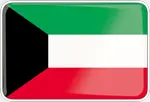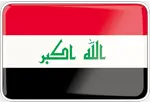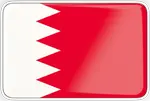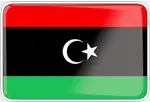Stay updated on the gold price in Palestine today with real-time data on Goldyza.
Gold Price in Palestine

Gold Ounce
13,575.47 Shekel

24K Gold
436.47 Shekel

21K Gold
381.91 Shekel


1kg Gold
436,470 Shekel

Last Update:
Dec 5, 2025 / 11:43 pm Gaza Time
Gold Price in Palestine Today
| Gold (1g) | Current Price | Change |
|---|---|---|
| 24K Gold | 436.47 Shekel | 0 |
| 22K Gold | 400.10 Shekel | 0 |
| 21K Gold | 381.91 Shekel | 0 |
| 18K Gold | 327.35 Shekel | 0 |
| 14K Gold | 254.61 Shekel | 0 |
| 12K Gold | 218.24 Shekel | 0 |
| 10K Gold | 181.86 Shekel | 0 |
| 9K Gold | 163.68 Shekel | 0 |
| 8K Gold | 145.49 Shekel | 0 |
Historical chart of the 21-karat gold price in Shekel (ILS) in UTC time.
In Palestine, monitoring gold prices is an essential aspect of daily economic culture. Gold serves as a preferred savings tool for families and a vital store of value in a dual-currency environment with volatile economic conditions. The yellow metal retains its appeal as a wealth reserve that can be liquidated quickly when needed. It also holds a traditional role in weddings and gifting, making its price fluctuations a matter of keen interest for both traders and consumers.
Local Determinants of Gold Prices in Palestine
Although gold prices are globally benchmarked in U.S. dollars, the final price in Palestinian markets is shaped by several local factors:
- Multiple Currencies in Circulation: Gold is commonly priced in shekels in the West Bank and in U.S. dollars in the Gaza Strip, while the Jordanian dinar also holds reference value for some traders. Any exchange rate movement among these currencies directly affects the final cost of gold, whether in small or large quantities.
- Import and Transportation Fees: Most gold bars and jewelry enter through markets in Jerusalem, Tel Aviv, Jordan, or Egypt. These routes incur logistical costs and often high insurance due to border procedures and customs, which are factored into the price margin charged by local merchants.
- Seasonal Supply and Demand Differences: Demand rises ahead of wedding seasons and during Ramadan, which increases the spread between buying and selling prices. Conversely, demand tends to slow during economic downturns or when the dollar strengthens, leading to greater discounts on craftsmanship costs.
- Commonly Used Karats: Palestinian consumers generally prefer 21-karat gold for daily jewelry, balancing durability and desirable color. In contrast, 24-karat gold is typically used in bars for long-term investment. The purity level directly influences the price—higher karat means a price closer to the spot rate, with lower craftsmanship costs for bullion compared to ornate jewelry.
- Craftsmanship Fees and Dealer Margins: Craftsmanship (known as “masnauiya”) refers to the extra cost for design and finishing. It’s usually calculated as a fixed fee per gram or a percentage of the item’s weight. These fees are lower for standardized products like bars or coins and higher for intricate or decorative pieces. Understanding the pricing structure helps consumers negotiate more effectively, especially when buying larger investment quantities.
Smart Buying Tips
- Request a purity test and an official hallmark to ensure the stated karat matches the actual product.
- Keep a detailed invoice listing weight, karat, craftsmanship fee, and serial number (if available); this facilitates resale or customs clearance.
- Compare dealer margins (the difference between global and local gram prices) across multiple shops in your area, and check nearby cities for more competitive rates.
- Consider diversifying between wearable jewelry and more liquid forms like bars or coins to suit different future needs.
Conclusion: Gold prices in Palestine result from a complex interplay of global dollar-based pricing, exchange rate fluctuations, import costs, and local seasonal demand. Choosing the right karat, understanding craftsmanship charges, and monitoring dealer margins are critical steps for any investor or retail buyer aiming to maximize the value of their gold savings. With continued awareness of the market drivers and real-time tracking tools, gold remains a reliable pillar for preserving purchasing power and supporting long-term financial planning.














